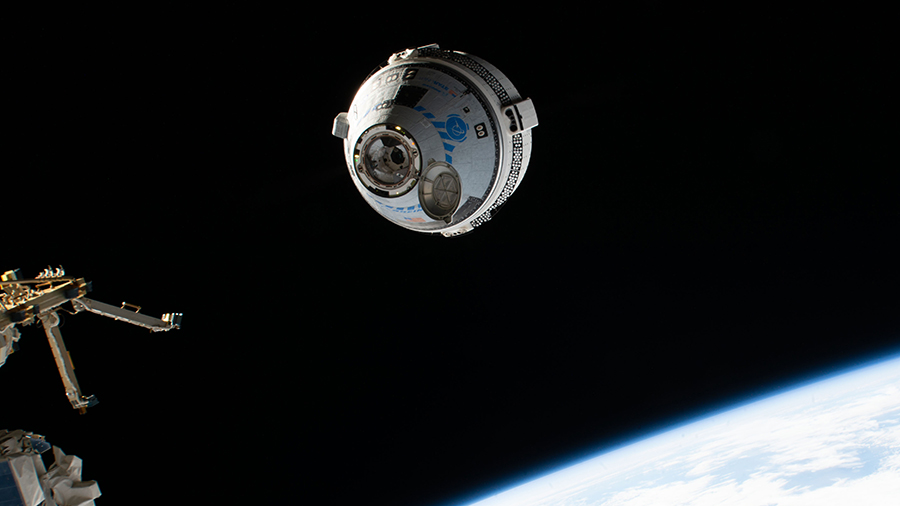
A muscle study, a robotics test, and space physics hardware were the main research topics aboard the International Space Station on Tuesday. The Expedition 67 crew will also see a Russian cargo craft depart and a new one launch to replace it this week.
Scientists have been exploring how an astronaut’s muscles adapt to weightlessness in order to ensure crews stay healthy in space and can withstand the return to Earth’s gravity. NASA Flight Engineers Kjell Lindgren and Bob Hines paired up today marking their foot, leg, shoulder, and back muscles for the Myotones study. The duo then took turns scanning the marked areas using the Myotones device and the Ultrasound device to measure the muscle’s biochemical properties. Results may improve health monitoring during spaceflight and treatments for muscle conditions on Earth.
Hines then joined NASA Flight Engineer Jessica Watkins for orbital plumbing work in the Tranquility module’s bathroom. The pair also had a robotics test on their schedule today for the Behavioral Core Measures investigation looking at how working on the surface of Mars might affect a crew member’s performance.
ESA (European Space Agency) astronaut Samantha Cristoforetti serviced sample cartridges from inside the Electrostatic Levitation Furnace (ELF) located in the Kibo laboratory module. The ELF can safely measure the thermophysical properties of materials at temperatures of over 2,000 degrees Celsius in microgravity.
Roscosmos Commander Oleg Artemyev and Flight Engineer Denis Matveev trained on a computer today for the automated arrival of the ISS Progress 81 (81P) resupply ship set for 9:03 a.m. EDT on Friday. The 81P is due to blast off three-and-a-half hours earlier from the Baikonur Cosmodrome in Kazakhstan. It will replace the trash-filled ISS Progress 79 cargo craft after it undocks from the rear port of the Zvezda service module early Wednesday morning.
Flight Engineer Sergey Korsakov deactivated Earth observation gear before conducting a physical evaluation on the advanced resistive exercise device that mimics a workout in Earth’s gravity. The first time space-flyer later studied future planetary piloting and robotic control techniques then explored ways to improve communications between international crews and mission controllers from around the world.
Learn more about station activities by following the space station blog, @space_station and @ISS_Research on Twitter, as well as the ISS Facebook and ISS Instagram accounts.
Get weekly video highlights at: http://jscfeatures.jsc.nasa.gov/videoupdate/
Get the latest from NASA delivered every week. Subscribe here: www.nasa.gov/subscribe









